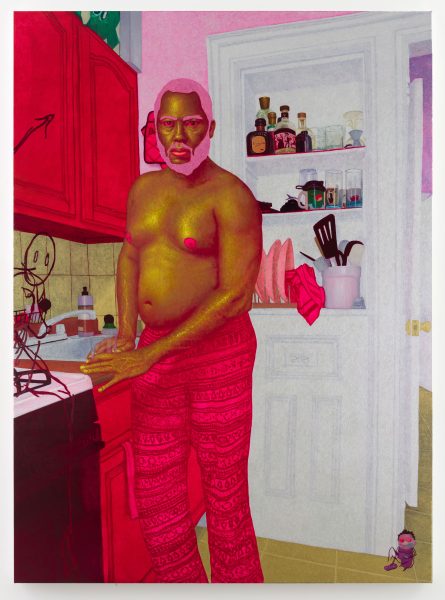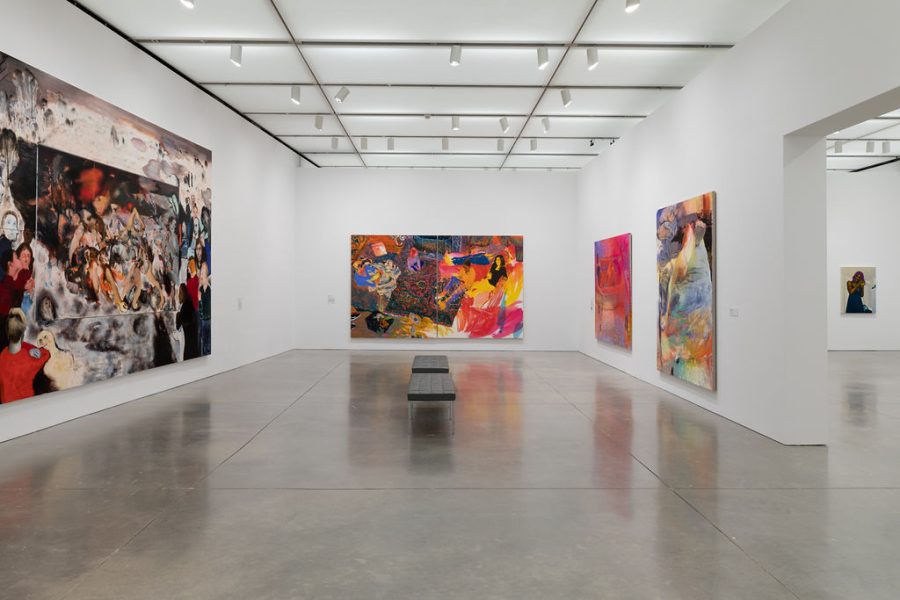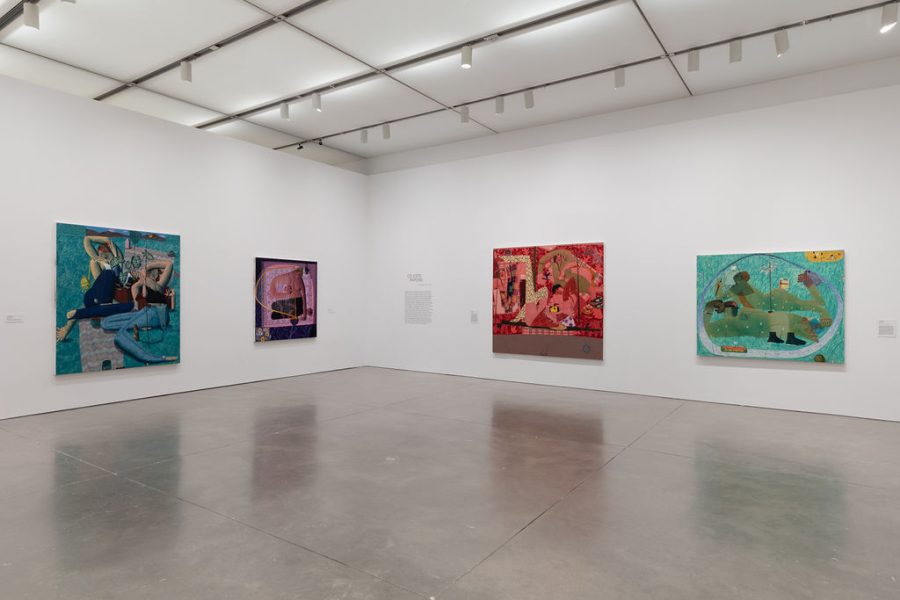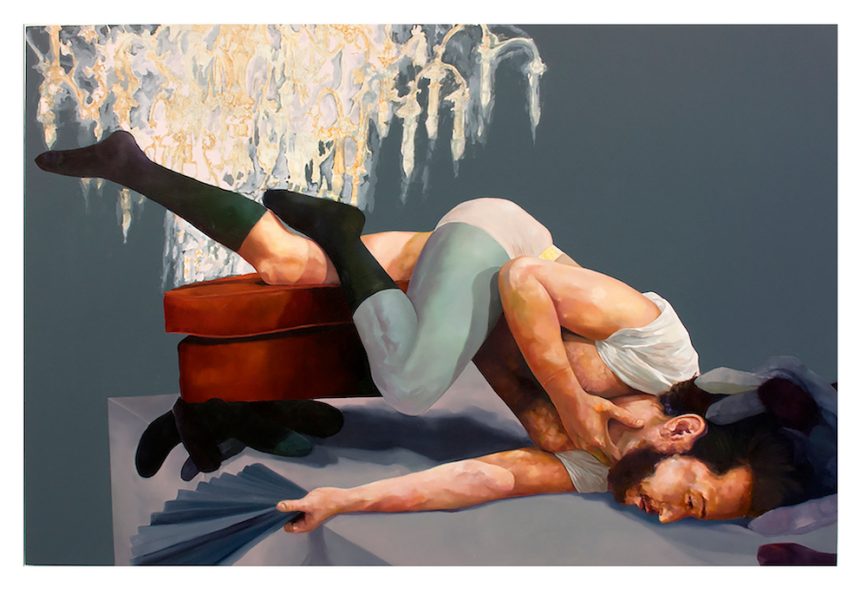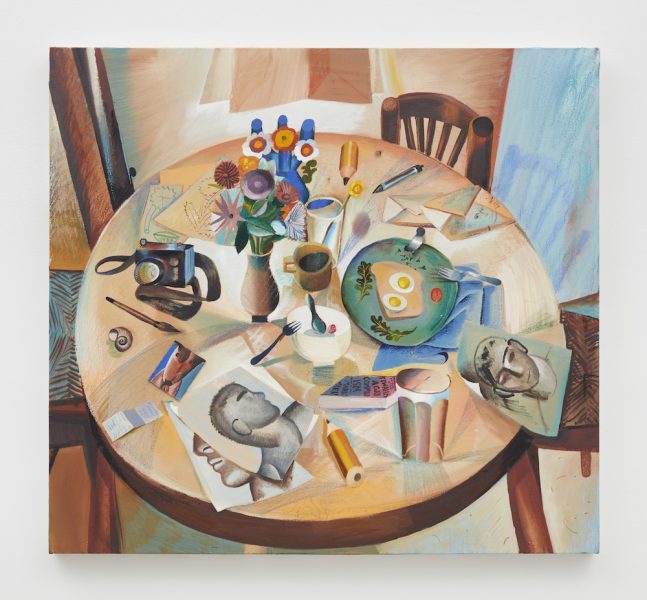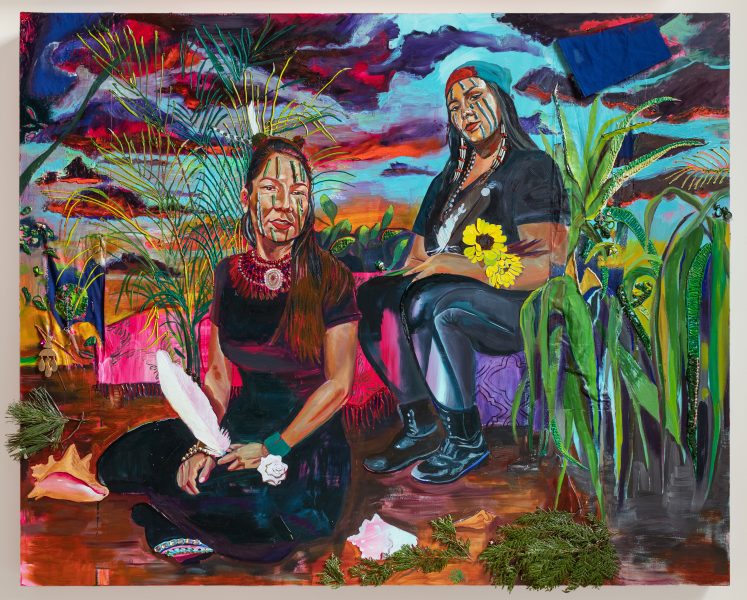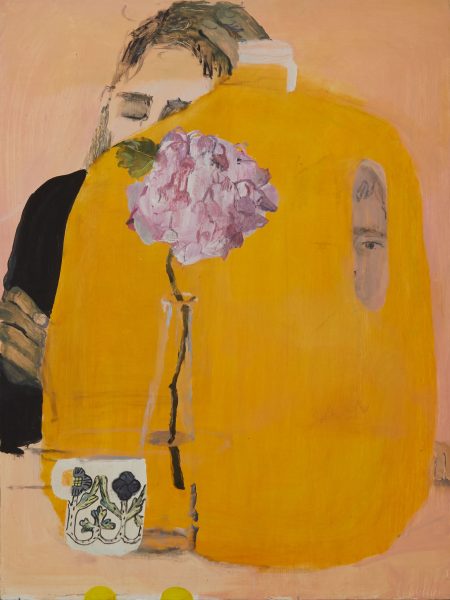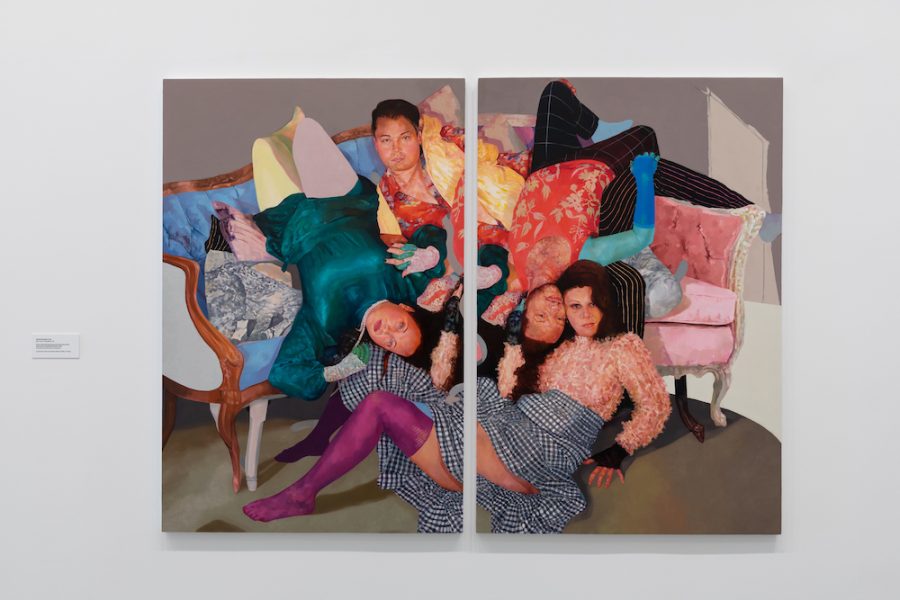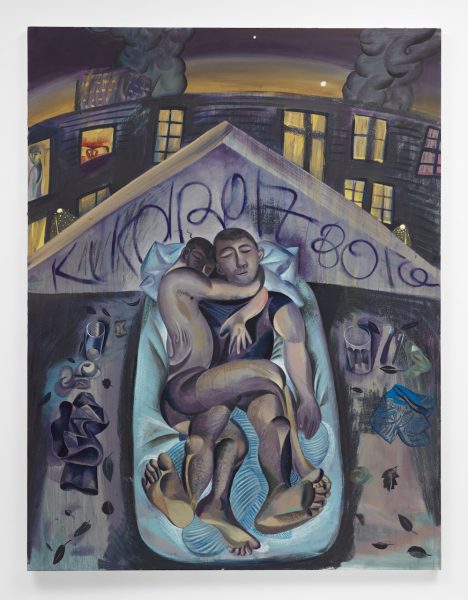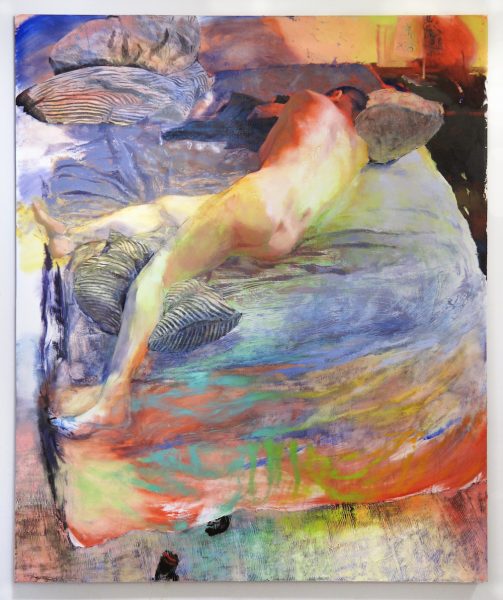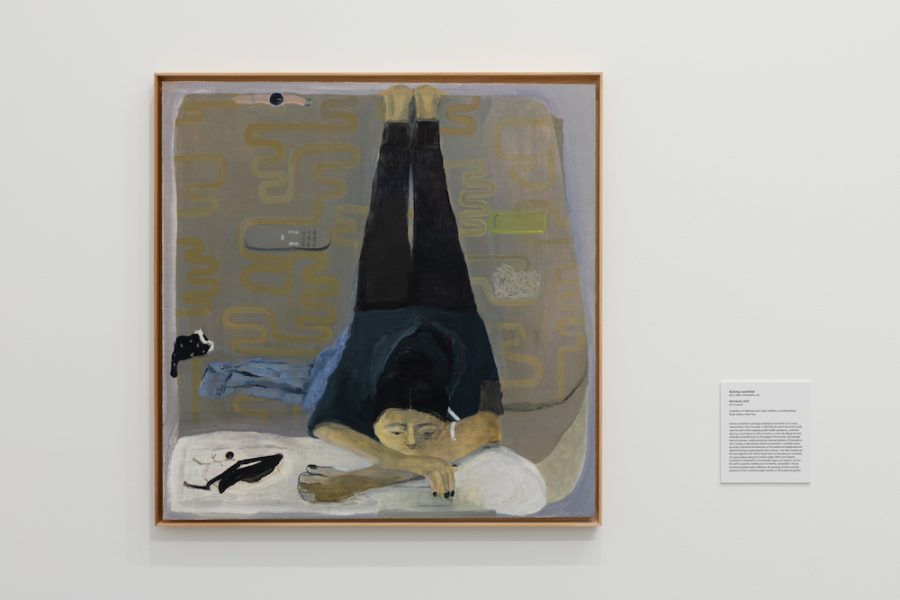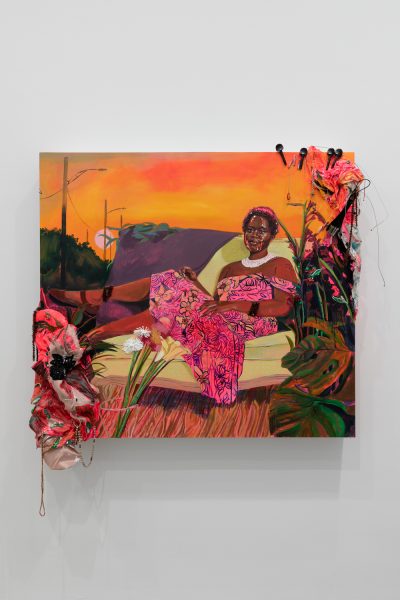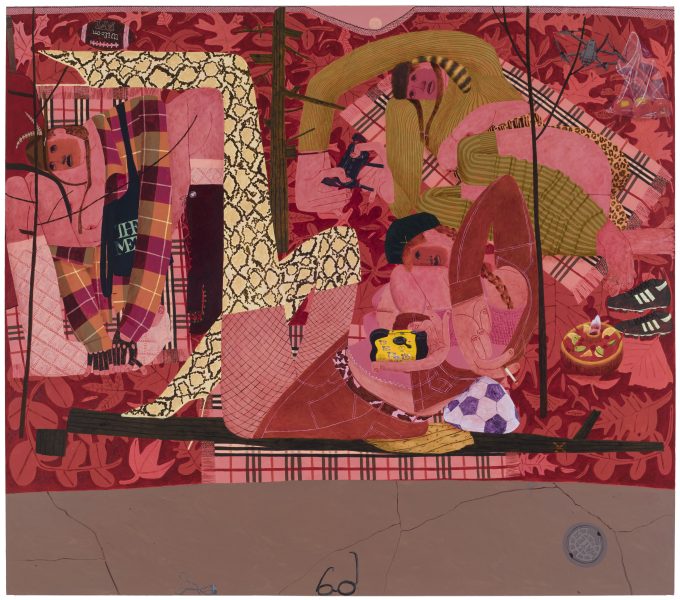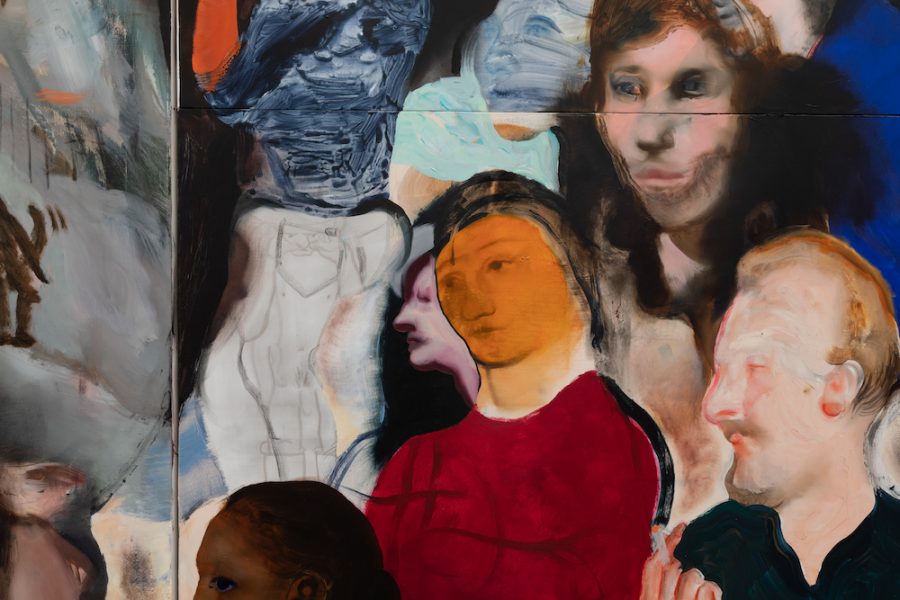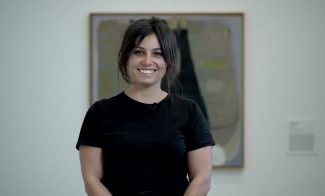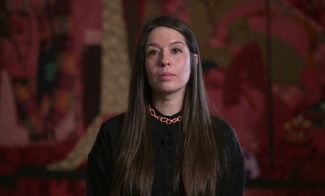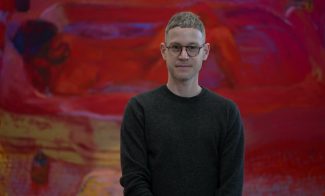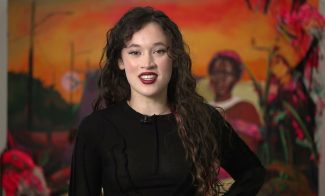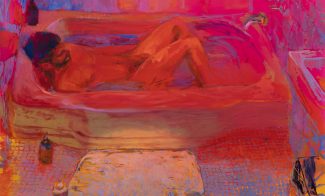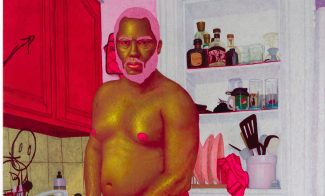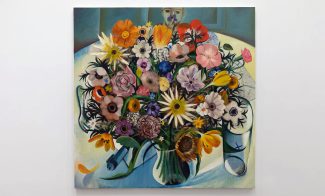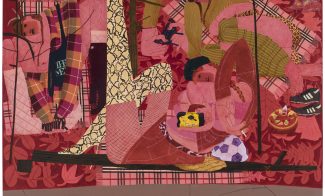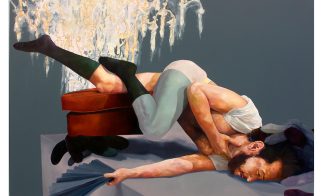A Place for Me celebrates a new generation of artists at the vanguard of contemporary painting. David Antonio Cruz, Louis Fratino, Doron Langberg, Aubrey Levinthal, Gisela McDaniel, Arcmanoro Niles, Celeste Rapone, and Ambera Wellmann are propelling figurative painting’s recent revival by depicting what they love—their friends, lovers, and family; studio spaces and homes; and the scenes that make up their everyday. Evoking intimacy, community, and the personal in the power to represent oneself in painting, these artists consider the politics of seeing and being seen and how the process of painting might register care, tenderness, fragility, empathy, and resilience. Colorful, surprising, and full of life, A Place for Me is a testament to the vitality of contemporary figurative art, reflecting a multitude of styles and approaches to painting through a cross-section of contemporary painting today.
About the Artists
David Antonio Cruz
Born 1974 in Philadelphia, PA
David Antonio Cruz is a Boston- and New York-based painter and mixed-media performance artist whose work centers Black, brown, and queer bodies. Inviting friends, family, artists, and others to be a part of his paintings has long been a part of Cruz’s process. In a new series of works, chosen family, the artist asks sitters to invite another person, or group of people, to gather with their chosen kin as a way to express the nonbiological bonds queer people form out of mutual support and love. Created during the pandemic, these intimate and collaborative moments of connection expand on conventional notions of family and portraiture. With festive color palettes, luminous skin tones, and lush patterning, Cruz’s paintings present his intersectional subjects in ways that defy conventions. His arrangements reimagine posture, autonomy, and rigidity to underscore the bonds and liberty of his sitters. In the artist’s words, “My work is a celebration of life, of being. Living in the moment and full of life. I treasure that. I had a choice to live as my authentic self or live for someone else a long time ago. I needed to live truthfully — so I chose me.”
Louis Fratino
Born 1993 in Annapolis, MD
Louis Fratino is a New York-based artist whose work fuses personal memories with art historical references to explore queerness, intimacy, and love in gestures and scenes of everyday life. The subject matter of his work ranges from nude figures to landscapes and still lifes, often drawn from his lived experiences rather than from photographs or sitters. Fratino typically begins his work from drawings that recall a particular mood or moment, and then expands upon these compositions in scale, form, and color during the painting process. Swooping contours and bands of color endow his paintings with an angular clarity often compared to Cubist and other modernist styles, while their tactile surfaces — finely scored and textured through the use of palette knives and scraping— convey a sense of touch, rawness, and labor. For Fratino, who experiences red-green color blindness, the dynamic tension in his compositions allows him to search for ways to represent the emotions and expressions of what he calls the “mysticism around painting, where you can manifest something through it, [whether] it’s something as simple as doing the dishes, or being in love with someone, or feeling close to your family.”
Doron Langberg
Born 1985 in Yokneam Moshava, Israel
Doron Langberg is a New York-based painter invested in the relationship between individual lived experiences and emotional states that are universal across social categories. Touch, physicality, and movement are significant areas of focus in his vivid paintings, which include portraits of his lovers, friends, family, and wider social circle. Langberg typically paints from life, creating small, observational pieces that he translates into large-scale paintings using a wide ranges of tools and techniques. Often depicting private, ordinary moments, his canvases combine highly rendered portions with gestural swaths of colorful brushstrokes, initiating an evocative dialogue between bodies and unrestrained sensation, while challenging figurative painting’s desire for completion. “I see my work as an aspirational space where queer experiences can embody more than just what they depict,” explains Langberg. “My paintings are both a real reflection of my everyday experiences, and an alternate reality where queerness is allowed to be expansive and generative.”
Aubrey Levinthal
Born 1986 in Philadelphia, PA
Aubrey Levinthal is a Philadelphia-based painter interested in what she calls the “uncanny in our everyday lives.” Her figurative paintings and still lifes suggest a meditative and melancholic atmosphere that offers less a portrait of her subjects, which range from herself to those in her family, and more an evocation of an emotional state. She frequently draws from life, beginning her paintings with sketches of private, mundane events, such as eating breakfast at the kitchen table or lying in bed. Working slowly, Levinthal builds up layers of thin, semitransparent washes of paint and then scrapes them down with a razor, lending her works an ethereal quality as if seen through the haze of time. Her palettes are moody, drawing on cool, rich colors, and her figures often exaggerate their proportions, introducing moments of disturbance or discomfort to heighten the moods of her subjects. “I hope my work is a real, tender accounting of my particular visual life,” says the artist. “The paintings can be inventive and distorted, as I often work from memory and through process, but I want them to carry resonance of my experience, which happens to be as a painter, woman, and mother.”
Gisela McDaniel
Born 1995 in Bellevue, NE
Gisela McDaniel is a Detroit-based artist whose work engages processes of healing for “womxn” (a term the artist uses for inclusive identities) and nonbinary people of color. Her mixed-media assemblages are created using oil paints and donated objects from her sitters, which bring a palpable physicality and a tactile materiality to her portraits. McDaniel’s subjects are people she meets through friends, acquaintances, or social media, and part of her artistic practice involves forging relationships with these individuals through conversations built on mutual trust and care. Her sitters choose how they are portrayed in the paintings, which the artist installs along with audio interviews she records during the process, played in this gallery from the shell on the pedestal. The paintings on view depict people from McDaniel’s immediate community in Detroit, and they reflect her deeply engaged approach to figuration. “By recording the stories of these [womxn],” reflects the artist, “I ensure that history hears their voices and recognizes them as having saved themselves.”
Arcmanoro Niles
Born 1989 in Washington, DC
Arcmanoro Niles is a New York-based artist known for brightly hued portraits of himself, his family, and friends painted from life or photographs. His distinctive use of vibrant orange or blue acrylic underpainting accentuates the chromatic dimensions of his subjects’ brown skin tones and his vivid palettes. This indirect painting process, which layers paints on the canvas to build up color (as opposed to direct painting, in which colors are mixed on a palette before being applied to the canvas), allows Niles to experiment and play with his materials, using a paint roller to apply textures that are finished with a glossy overcoat and sealed with oil. The effect is a highly luminous surface that charges his work with eye-catching energy, contending with the otherwise tender, melancholic stillness in his scenes. To complete his works, Niles usually adds imaginary, marginal creatures he calls “seekers,” who, “like devils on our shoulders,” reflect the subliminal urges and desires of his subjects. “At the end of the day,” says Niles, “I am a painter who is interested in color and stories that talk about who we are, little moments that give us a glimpse into what life feels like.”
Celeste Rapone
Born 1985 in Glen Ridge, NJ
Celeste Rapone is a Chicago-based, abstract figurative painter known for depicting her subjects in outlandish and even humorous compositions that evoke a range of emotions from vulnerability and desire to self-indulgence and freedom. Rapone does not use preliminary studies in preparation for her paintings, but rather begins with a color, idea, and space in mind and then works reflexively by adding, removing, and detailing as she goes. Her subjects (who are often women and usually reference the artist herself) appear in contorted poses within vivid environments at once quotidian and strange. To these portraits, she incorporates everyday objects or personal trinkets building out her characters and their distinctive personalities. “There’s something about the idea of the women contained, occupying these impossible positions anatomically, but also in terms of expectations, ambition, defeat, and self-awareness [that interests me],” shares the artist. “It is a lot of what embodies painting as a process and practice… . That notion of effort or expectation that goes into trying, which tries to counter failure. But failure is always one aspect of a larger cycle, in life and in painting.”
Ambera Wellman
Born 1982 in Lunenburg, Nova Scotia
Ambera Wellmann is a New York-based artist who probes the human psyche, personal experience, and history in her striking paintings. Her recent work has focused on large-scale compositions depicting multiple figures and landscapes in churning, fantastical, and apocalyptic scenes at once brutal and humorous. She draws inspiration from the vast image stores of contemporary life — printed and found images, Instagram, photographs she shoots with her phone — adding to them studied art historical references and personal experiences. Her process often includes layering disparate subjects and compositions as she builds up her paintings using thinned paint to achieve an elastic luminosity. Her figures possess a sense of liquidity and appear in perpetual states of becoming as boundaries dissolve and bodies intermingle. Wellman’s animated style disrupts the heteronormative and Western figurative canon, in favor of a distinctly feminist and queered perspective. Interested in unmooring expressions of identity, the artist notes: “There’s this urge sometimes when you’re painting to answer things. I try to avoid that, actually. A painting should end with a question; it helps lead you to the next one.”
